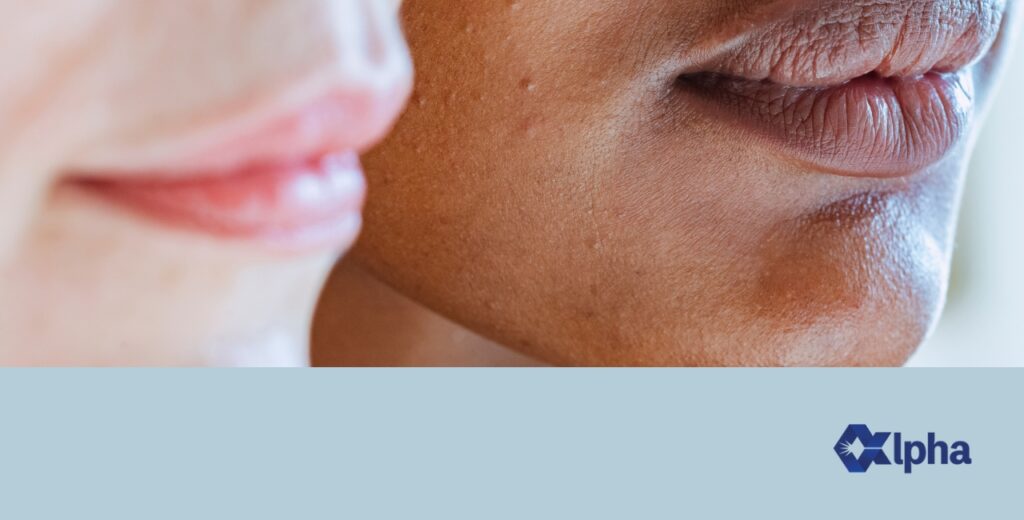Skin reflects overall health. It undergoes numerous changes throughout your lifetime and is especially susceptible to damage from environmental factors like sun exposure and aging.
Alpha can treat a wide variety of these concerns with minimal clinical downtime. Regarding skin health, one size does not fit all; that’s why Alpha provides a premium device with customisable treatment parameters.
What makes Alpha so unique?
Alpha is an award-winning combination of two of the most in-demand technologies in one device: Diode and IPL, PLUS blue light therapy for acne.
Alpha is a revolutionary new treatment for skin rejuvenation, acne, and body contouring. Alpha delivers unparalleled results with its proven combination of clinically proven technologies to improve skin texture, tone and colour.
With its interchangeable 808 Diode and 3D IPL Handpieces, ALPHA allows your practice to provide various other services to your patients without investing in additional devices that take up valuable dollars and office space.
How Does Diode Laser Work?
Diode laser technology is a relatively new addition to the wide range of phototherapy equipment available. Diode lasers use the principle of selective photothermolysis (abbreviated SPTL) to target specific chromophores in the skin, usually melanin or blood.
The lasers damage the chromophores by selectively heating them while leaving surrounding tissue unharmed. A diode laser can be complemented by cooling technology or other pain-reducing methods which improve treatment efficacy and patient comfort.

3D IPL Technology
IPL (Intense Pulse Light) is an intense broadband and incoherent light with a wavelength spectrum spanning 420nm – 1200nm. IPL provides a wide range of non-invasive applications based on the human skin’s selective absorption and photothermolysis of light sources. This widespread aesthetic practice is specifically designed to offer the following:
- Acne management
- Vascular Therapy
- Photo Rejuvenation
- Pigmentation correction
Because IPL uses a much broader spectrum of light than laser, it can deliver a more comprehensive range of aesthetic treatments and treat a broader range of hair colours and skin types. Furthermore, IPL treats a much larger skin area per light pulse than laser, resulting in a more rapid and cost-effective treatment process.
Alpha’s unique 3D IPL technology can treat different skin conditions, including acne, rosacea, small veins, redness, discolouration, wrinkle reduction, skin tightening, scarring and more.
IPL for Skin Rejuvenation
Many want clear, blemish-free skin, but achieving that goal can be difficult even with a meticulous skincare regimen. Photorejuvenation uses Intense Pulsed Light (IPL) technology to help reduce the appearance of common skin woes, including brown spots, melasma, broken capillaries and sunspots.
IPL is a less invasive alternative to laser skin resurfacing. It bypasses the epidermis (top skin layer) and targets the second skin layer (dermis) for improvements to skin pigmentation, skin texture, and overall complexion. IPL causes less damage to the surface skin, so there is minimal peeling, scabbing, and flaking.
IPL is especially effective for abnormal pigmentation and skin tone (like freckles, sun damage, brown spots, discolourations, and certain birthmarks) and can also be used for rosacea, vascular lesions, and visible blood vessels (broken capillaries or spider veins).

How Many Treatments are Required?
IPL treatments target specific issues, such as sun damage or acne scars. However, the result of an IPL treatment is not immediate, and it may take some time to see your treatment’s full effects.
For patients to get the best results from a series of IPL sessions, it is generally recommended that patients receive, on average, four-six treatments scheduled four weeks apart.
Why do most patients need more than one IPL session?
Every IPL treatment builds upon the previous one, allowing the skin to react gradually.
Why are IPL treatments done four weeks apart?
On average, the body turns over new skin cells every 30 – 40 days. Scheduling IPL sessions every four weeks allows the body to recover and return to normal before the subsequent treatment.

Want to Know More?
We know you have a lot of options when it comes to choosing the right aesthetic technology for your business. At Device Consulting, we’re committed to helping you find the right system for your needs. Whether you offer a wide range of services or specialise in a specific field, we know we have the right aesthetic technology for your business.
Contact us today for more information or to book a complimentary demonstration with one of our product specialists.
